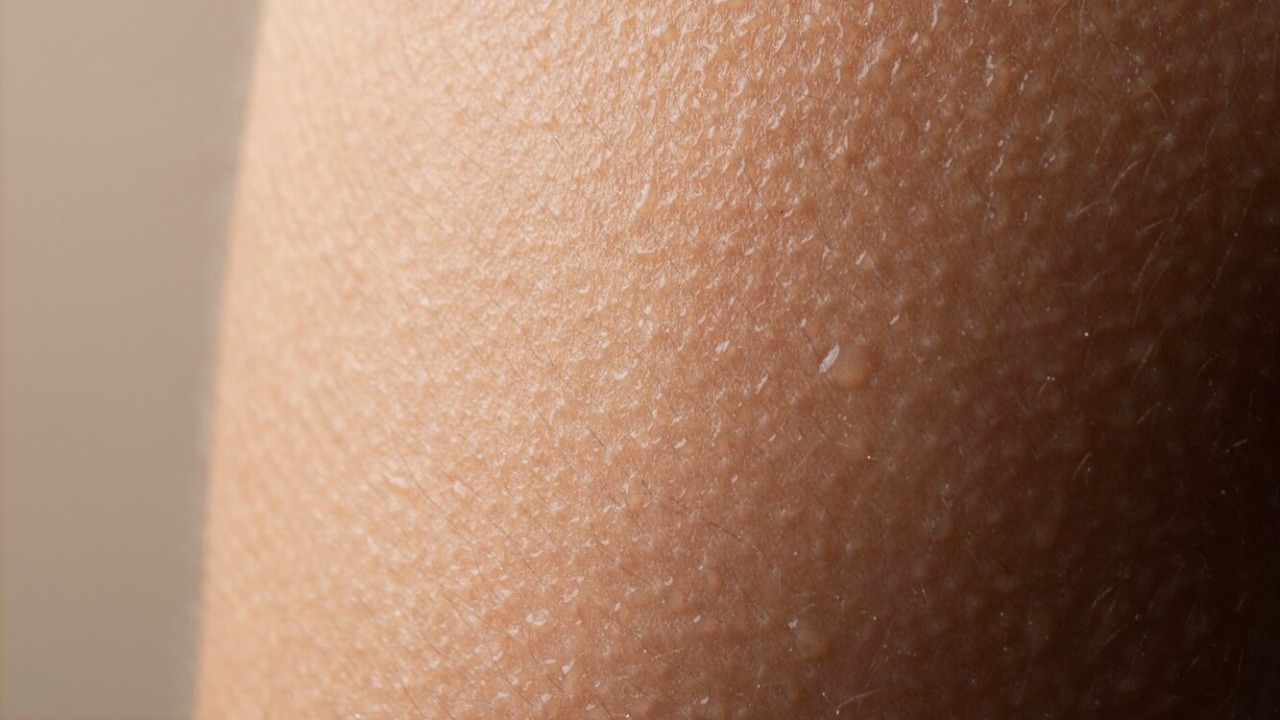
Goosebumps, or piloerection, occur as a physiological response triggered by the sympathetic nervous system when individuals experience fear or inspiration. This reaction involves tiny muscles called arrector pili contracting to raise hair follicles, a mechanism that helps explain why such chills can arise in both terrifying and awe-inspiring moments. Understanding this phenomenon provides insight into the complex interplay between our emotions and physical responses.
The Physiology of Goosebumps
The arrector pili muscles play a crucial role in the formation of goosebumps. These tiny muscles contract to erect hairs on the skin, leading to the visible bumps that we recognize as goosebumps. This process is activated by the sympathetic nervous system, which releases adrenaline during moments of emotional arousal. According to a Popular Science article, this response is part of the body’s broader reaction to emotional stimuli, whether they are frightening or inspiring.
Hair follicles and skin layers are integral to this process. The effect of goosebumps is more noticeable in individuals with denser body hair, as highlighted by Live Science. The contraction of the arrector pili muscles causes the hair follicles to stand upright, creating the characteristic bumps on the skin. This physiological response, while more pronounced in some people, is a universal reaction to certain emotional triggers.
Evolutionary Reasons for Goosebumps
Goosebumps likely evolved as a survival mechanism. In animals, this response serves to make them appear larger and more intimidating to predators by fluffing up their fur. This evolutionary trait, as explained by Popular Science, is a vestige from our mammalian ancestors. In modern humans, the practical purpose of this response has diminished, yet it persists as a remnant of our evolutionary past.
Beyond intimidation, goosebumps also have connections to thermoregulation. Originally, this response helped trap air for warmth in cold conditions, a function that was crucial for survival in harsh environments. As noted by Live Science, while this function is less relevant today, it underscores the adaptive nature of our physiological responses and their roots in our evolutionary history.
Goosebumps Triggered by Fear
The fight-or-flight response is a well-known trigger for goosebumps during scary situations. When faced with danger, the body prepares to either confront or flee from the threat, and goosebumps are part of this preparation. Watching horror films, for example, can induce this response as adrenaline amplifies the sensation of fear. According to Popular Science, this reaction heightens sensory awareness, even if it doesn’t directly aid survival in contemporary settings.
Despite its diminished practical utility, the fear-induced goosebump response remains a fascinating aspect of human physiology. As Live Science explains, this reaction is part of a complex system that enhances our sensory perception, allowing us to be more alert and responsive to potential threats. This heightened state of awareness, while not always necessary in modern life, reflects the intricate ways in which our bodies have adapted to ensure survival.
Goosebumps from Inspiration and Awe
Emotional highs, such as listening to moving music or witnessing beauty, can also elicit goosebumps through similar neural pathways. This phenomenon, known as frisson, involves the chills from positive stimuli and shares an overlap with fear responses in brain activity. As detailed by Popular Science, these emotional responses activate the same physiological mechanisms, highlighting the interconnectedness of our emotional and physical experiences.
Cultural examples abound where inspiration leads to widespread goosebump experiences. Concerts, speeches, and other emotionally charged events often trigger this response, as noted by Live Science. These moments of collective emotional engagement demonstrate the power of shared experiences to evoke profound physical reactions, underscoring the universal nature of goosebumps as a response to both fear and inspiration.